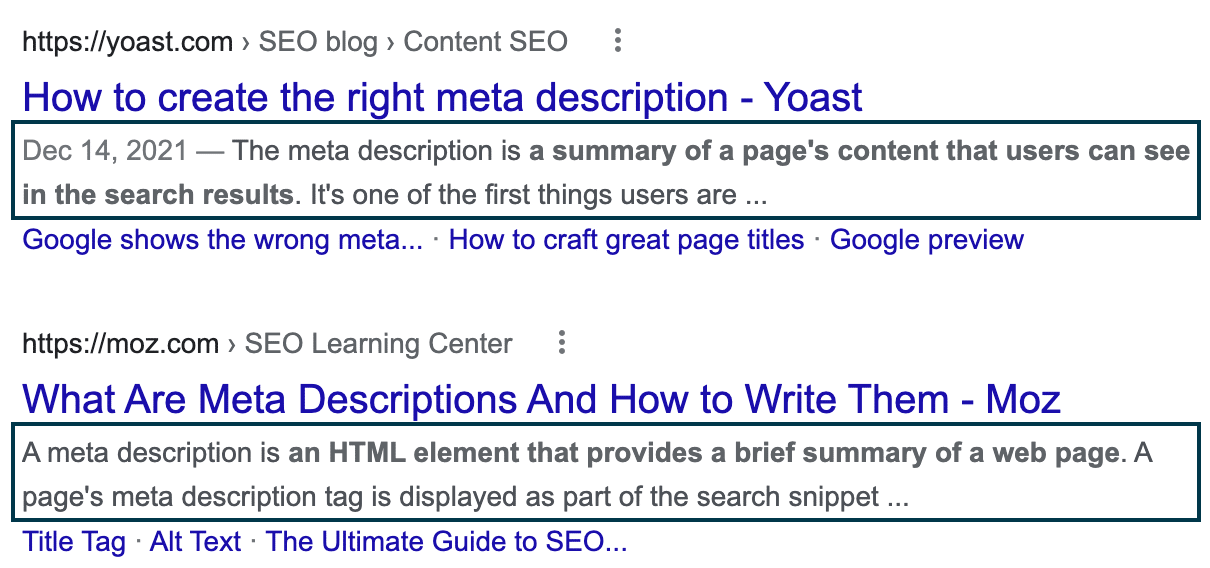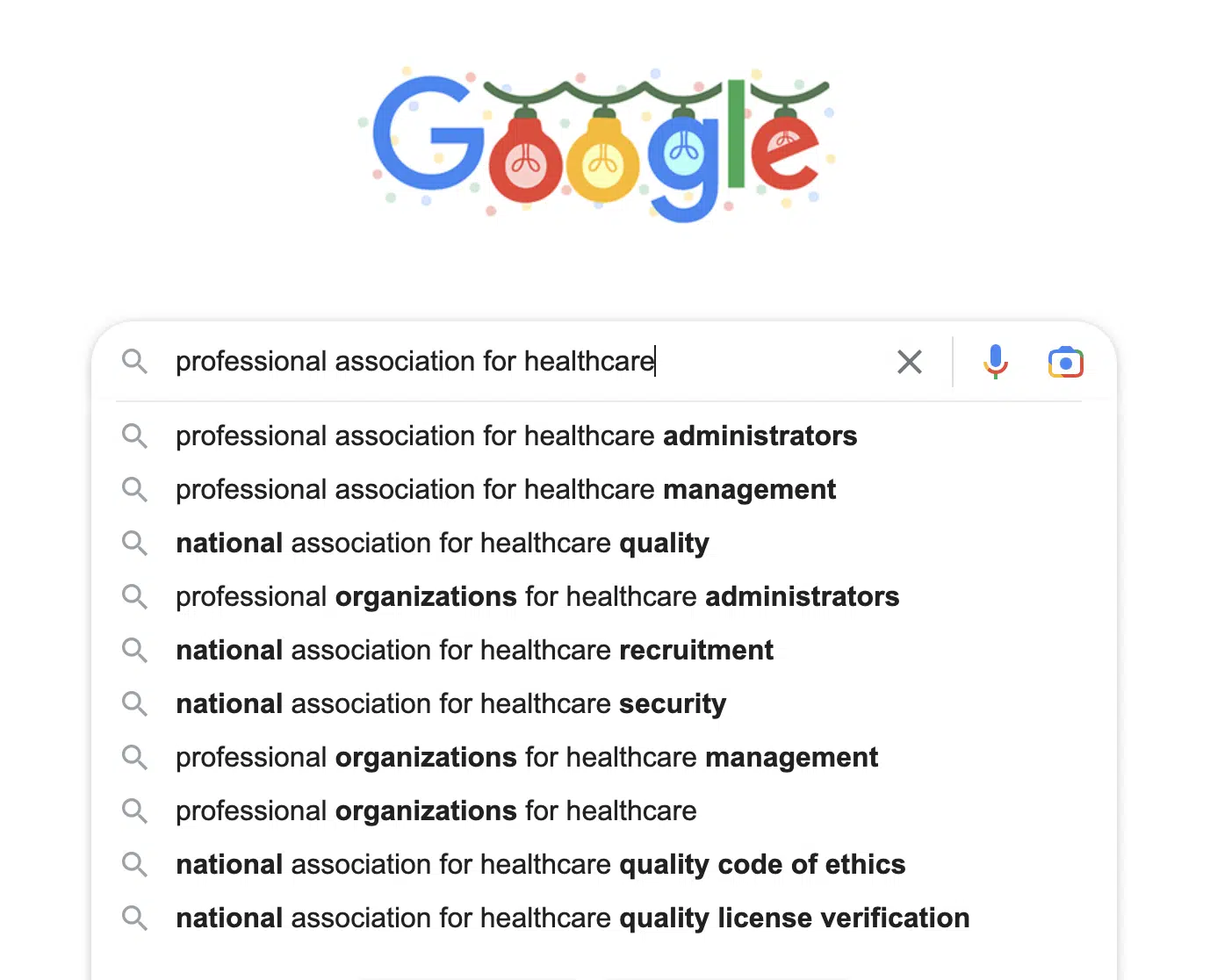SEO for Associations: Blogging for Better Rankings

The science of SEO for associations is not fundamentally different than for any other industry, but association professionals often work with lean teams of multi-skilled players. If you’re a marketer tasked with improving your association’s SEO, your organization’s blog may be the most accessible place for you to start.
What Is SEO?
SEO is a science and an art. It’s the process of improving a website to make it more visible to people who search for specific products or services online. Essentially, in an endless sea of online content, the right SEO strategy can serve as a lighthouse for your association, gently steering folks your way.
There are several types of SEO, such as on-page SEO, which would include anything on your website, including product descriptions, bios and blogs. Then there’s off-page SEO, which would include backlinks to your site, and then technical SEO, which involves site-indexing to assist bot crawlers, those sneaky little spiders that scan your content for relevant information. For now, let’s focus on on-page SEO, specifically blogging, and what it can do for your association.
Why Associations Can’t Ignore SEO
The vast majority of consumers begin their customer journeys online. Current and prospective members are consumers of association products and services, and increasingly, consumer experiences with B2C brands influence their expectations of B2B brands. In this environment, having a top-notch website is imperative, but even that is not enough. Associations need an SEO strategy to land in their customer’s search results.
Why Blogs Are an Effective SEO Tool
A blog can benefit your association in numerous ways, including establishing your association as a thought leader in the industry, increasing member engagement, building rapport with community and, of course, increasing your traffic and improving SEO. All of this can ultimately lead to enhanced authority, name recognition and member growth. Your blog gives you a platform to answer the questions your current and prospective members are asking online, gaining your association exposure and positioning it as an authority on topics relevant to your business.
An association’s blog is likely under the purview of the marketing department, making it an accessible tool for marketers looking to boost search rankings.
What Factors Impact SEO for Associations?
Search engines want their customers to return to them again and again for answers. To build that loyalty, search engines must provide results that searchers find useful. Search engines evaluate whether one web page or another will be useful to searchers through a variety of data points, often referred to as an algorithm.
There are several factors that search engines consider when ranking your association’s website and specific web pages.
1. Keywords/Keyphrases
Your keyword or keyphrase is the foundation of your SEO strategy for any page. The word or phrase you choose will be the standard to which all your page content is held. It’s important to choose a word or phrase that aligns with your business but also with the language your potential customers use in search engines. Learn more about keyword strategy below.
2. Page Title/Headline (H1 Tag)
The title of a web page is one of the primary ways search engines determine if the content of a page matches up with the topic of a search query. A page’s title should include the keyword or keyphrase that the page is optimized for. For example, a page on your website whose main purpose is to promote your annual conference should have a title like “annual conference.”
Websites have a set of styles that determine the size, color and font of text on the site. Title text is usually displayed in H1 style, though it may be hidden. Even if it is not visible to the site visitor, applying the H1 tag identifies the page title for search engines.
3. Subheadings (H2 and H3 Tags)
Subheadings importantly provide visual breaks and organization for your web page content. They are also an opportunity to reinforce your keyword and keyphrase. Like the page title, subheads should be tagged with a style, like H2 or H3, to flag their hierarchy for search engines. When blogging, subheadings are a good way to introduce topics related to your keyword, allowing you to cover the subject matter completely.
4. Meta Descriptions
Meta descriptions are not visible on the web page, but they offer a great opportunity to draw visitors to your site. Each search result on the search engine results page (SERP) includes the page’s title, URL and meta description. Pages whose meta descriptions include keywords used in search queries rank higher in the SERP. Good meta descriptions are phrased as calls to action and provide a preview of a page’s content.
5. Multimedia/Rich Media
One way search engines determine if a web page provides searchers a good experience is a metric called time on page. If a searcher clicks your web page in the SERP and does not immediately leave, your SEO score improves. One way to keep visitors engaged is with media like images, video and audio. You can even embed social posts.
6. Alt Text
Whenever you have media on your web page, you’ll want to include alt text. This hidden text is revealed if media does not display properly, giving the visitor an idea of what is depicted in the media they are supposed to be seeing. It’s also useful for visitors who may have limited vision or hearing, as their screen reader can see the alt text. When writing alt text, use your keyword if it is relevant to the description of the media, and be very literal about what the media depicts.
7. Reading Ease
Search engines favor content that is easy to read. The vocabulary you use will vary by your industry, but in general, you can make your content more reader friendly with a few industry-agnostic techniques:
- Write in active voice.
- Avoid long sentences.
- Break up your content with lists, subheadings and media.
8. Hyperlinks
You must include hyperlinks in your content for a good SEO score. You need to link both to pages on your own site (internal links) as well as other websites (external links). When linking anywhere, avoid sending readers to a homepage, as this is usually an information dead end. Choose pages that provide more in-depth information on the word or phrase you hyperlink.
9. Word Count
Your content must be long enough to cover a topic comprehensively, but you don’t score points for writing long content without substance. Content optimized for your most specific keywords or keyphrases will likely be shorter than content for your broadest keywords and keyphrases. Learn more about this and the cluster model below. Check out our blog post on word count for more details to determine the right length of your content.
How to Boost Your Association’s SEO With Your Blog
Whether you put any effort or strategy behind it, your website is constantly being evaluated for SEO. You can turn some of the levers in your favor by using your blog to boost your site’s authority.
1. Define a Keyword Strategy for Your Blog
To help you define the keywords and keyphrases you should include in your blog content, begin by understanding your audience. What will they be looking for online and what words will they use to search for it? Make a list of relevant topics to your association in addition to the types of things your association offers. Extract single words or short phrases from there. You can also use tools like Google Keyword Planner or Semrush to see how many people are searching for certain terms and how competitive those terms are among content producers like your association. Keywords ripe with opportunity have high search volume and low competition.
A good SEO strategy includes broad keywords/keyphrases and narrow keywords and keyphrases related to them. Sometimes called long-tail keywords, these narrow keywords and phrases represent the more specific variations of questions people may type in a search engine. In the search below for “professional association for healthcare,” possible long-tail keyphrases are displayed as suggested searches.
2. Write Blogs With the Cluster Model
The cluster model is a way to organize your web content for maximum SEO performance. Like the name suggests, this method involves creating content clusters around your broadest keywords. A professional association may have content clusters for the following keywords:
- Membership
- Continuing education
- Conference
Using the cluster model, the association would craft a comprehensive web page optimized for the keyword “membership,” and it would include internal links to a variety of other pages optimized for long-tail keywords, such as:
- Membership benefits
- Membership dues
- Student membership
- Corporate membership
In this way, the association creates networks of pages that support one another and provide a visitor with a logical path to more information. The more avenues available to the visitor, the more likely they are to stay on the association’s website, which improves its authority in the eyes of a search engine.
3. Drive Conversion with Your Blog Posts
Just as important as providing good information and engaging media are conversion opportunities. You worked hard to get your visitors from organic search. Don’t let them slip away without giving them a chance to take action with you. You can insert conversion opportunities throughout your blog. Promote relevant resources for visitors to learn more about a topic. Invite them to register for your events or sign up for your newsletter.
SEO for Associations Is a Work in Progress
The final step in any SEO strategy is to track your progress and make changes along the way. You can use Google Analytics to see how much of your site traffic is coming from organic search, but there are various online tools—some free, some paid—that will help you dig deeper into your SEO and the audience you’re attracting, such as Semrush and Monster Insights. Continually monitoring your progress will help you inform your future SEO decisions, so keep a close eye on your work and adjust when it’s necessary.



